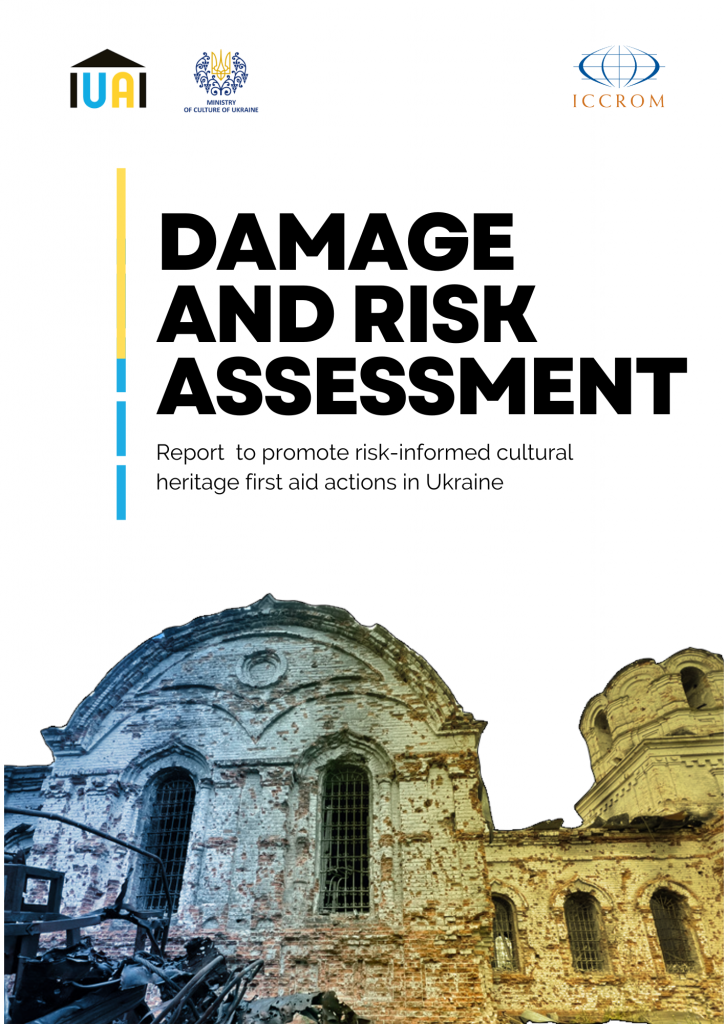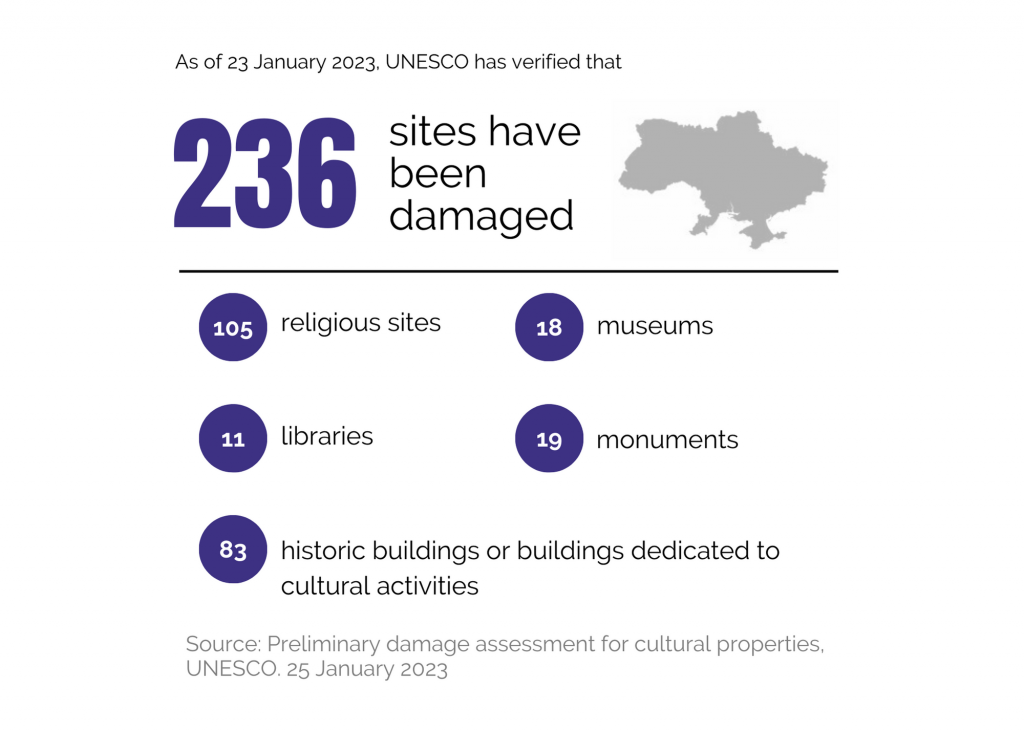 Nearly one year into the ongoing Russia-Ukraine war, all types of heritage across Ukraine have been damaged, destroyed or are at risk of becoming so. Through remote sensing and satellite images, UNESCO and other institutions have identified potential damage to 236 cultural sites in Ukraine. As the war enters its second year, this number is bound to increase.
Nearly one year into the ongoing Russia-Ukraine war, all types of heritage across Ukraine have been damaged, destroyed or are at risk of becoming so. Through remote sensing and satellite images, UNESCO and other institutions have identified potential damage to 236 cultural sites in Ukraine. As the war enters its second year, this number is bound to increase.
In response, ICCROM’s First Aid and Resilience for Cultural Heritage in Times of Crisis Programme (FAR), in collaboration with the Ministry of Culture and Information Policy of Ukraine, Maidan Museum and Heritage Emergency Response Initiative (HERI), have developed a systematic, on-site damage and risk assessment for all types of heritage. The assessment is enabled by a mobile and web-based application.
ICCROM’s response to heritage safeguard in Ukraine - A web and mobile app to collect damage & risk data
ICCROM’s Council adopted a resolution on 4 May 2022, recognizing the urgent need to protect and safeguard cultural heritage in Ukraine. Since then, ICCROM-FAR has taken multiple steps to respond to the emergency in Ukraine. Read the full resolution here.
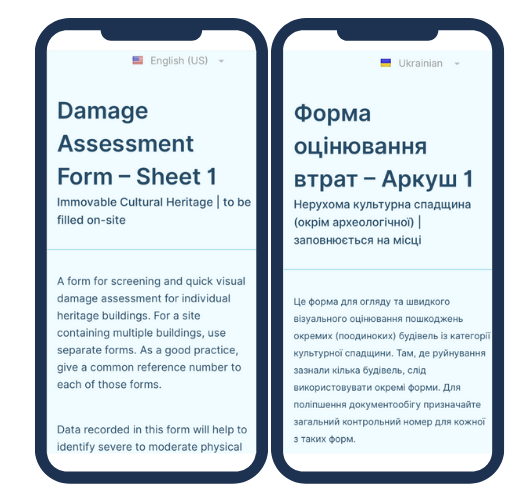 Based on the outcomes of a two-day emergency online training workshop for 77 diverse professionals from 14 oblasts in Ukraine, ICCROM, in collaboration with its local partners, the Ministry of Culture and Information Policy of Ukraine, Maidan Museum and Heritage Emergency Response Initiative (HERI), developed a common methodology for customized damage and risk assessment forms for movable, immovable and intangible heritage. The forms, available in multiple languages, were uploaded to a secure mobile and web-based app specifically developed for this purpose. The app, hosted on a secure server, is available on Android, iOS and the web and can be used online and offline.
Based on the outcomes of a two-day emergency online training workshop for 77 diverse professionals from 14 oblasts in Ukraine, ICCROM, in collaboration with its local partners, the Ministry of Culture and Information Policy of Ukraine, Maidan Museum and Heritage Emergency Response Initiative (HERI), developed a common methodology for customized damage and risk assessment forms for movable, immovable and intangible heritage. The forms, available in multiple languages, were uploaded to a secure mobile and web-based app specifically developed for this purpose. The app, hosted on a secure server, is available on Android, iOS and the web and can be used online and offline.
A technical ICCROM-ICOMOS mission to Ukraine in July 2022, joined by the ALIPH Foundation, assisted in gaining a better understanding of the emerging on-the-ground needs, identifying gaps in capacities through consultations with the Ministry of Culture and Information Policy of Ukraine and other local heritage professionals. The app was field-tested during the mission.
Over the next six months, the app was field-tested at more than 17 damaged heritage sites in Ukraine, Pakistan and the Philippines. Local partners in Ukraine then chose four heritage sites for an in-depth analysis of the damage and risk data and to become the basis of a prototype analytical report that will promote risk-informed cultural heritage first aid actions.
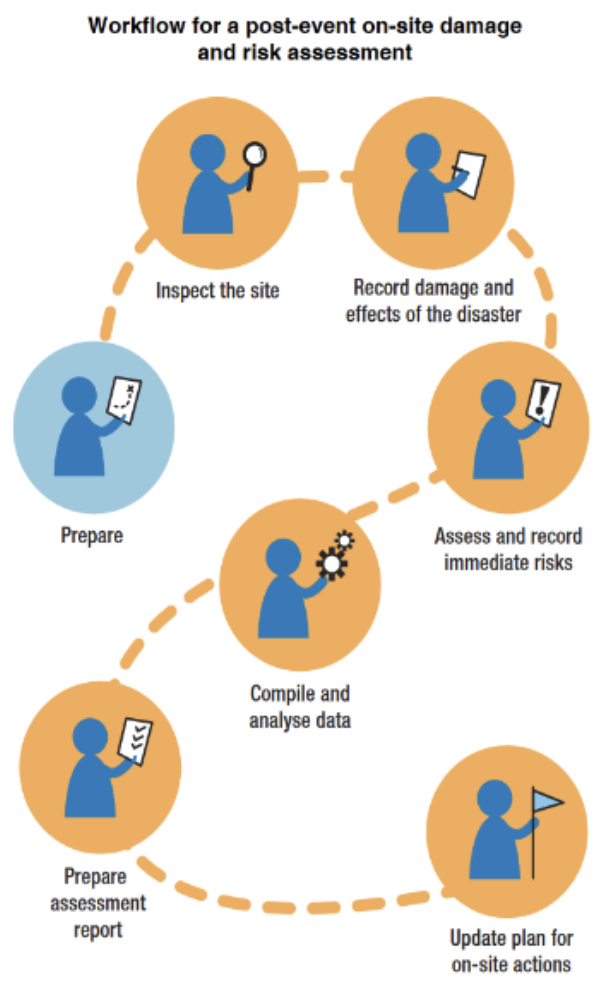
The ICCROM-FAR Team, in collaboration with expert architect Rand Eppich, as well as local architects from Maidan Museum and HERI, are happy to release the first results of the damage and risk assessment report for the four sites: Ascension Church and Library for Youth (former Tarnovskyi Museum of Antiquities) in Chernihiv, and the Shop of the Merchant F Kurylo and Forest Research Station, (former house of the manager of the estates of L. Koenig) in the Sumy Region.
The report aims to be the genesis of the first-ever risk map for damaged heritage sites in Ukraine. We thank ICCROM’s Council for allocating special funds to protect heritage in Ukraine. We are grateful to the Ministry of Culture and Information Policy of Ukraine, Maidan Museum and Heritage Emergency Response Initiative (HERI) for their steadfast commitment to the process and constant support, which has helped ICCROM implement on-the-ground action.
We plan to amplify this action with upcoming initiatives that consolidate efforts with the international community to reinforce protective measures to safeguard Ukraine’s cultural heritage.
What’s next?
- The damage and risk assessment report will be periodically updated with analyses of more than 20 damaged heritage sites in Ukraine to build a risk map through systematic analysis and triangulation of existing damage and risk data collected from various sources.
- In-person training on cultural heritage first aid and recovery planning with the support of the European Commission’s Directorate-General on Education, Youth, Sport and Culture (EAC), in collaboration with the International Council on Monuments and Sites (ICOMOS International) and its International Scientific Committee on Risk Preparedness (ICORP), Ministry of Culture and Information Policy of Ukraine, Maidan Museum and Heritage Emergency Response Initiative (HERI)
- At-scale advanced hands-on capacity development for cultural heritage first aid, recovery and risk reduction in collaboration with UNESCO and ICOMOS International
In a complex emergency, why conduct damage and risk assessment for heritage?
In an emergency, all sectors – including humanitarian aid, civil protection and military – have tools to systematically gather damage, risk and loss data. Yet, there is no such tool dedicated to documenting the damage and risks to cultural heritage. Rapidly-implemented, post-event damage and risk assessments, whether conducted remotely or on-site, are integral to efficient emergency response for the protection of cultural heritage. These assessments offer a wide lens on site-specific, heritage-based damage and risk data, which helps identify and prioritize actions, estimate the funds and resources needed, and enhance preparedness by mitigating immediate risks. ICCROM’s FAR Programme specializes in this methodology and is experienced in helping governments define priorities in the aftermath of large-scale emergencies and disasters.
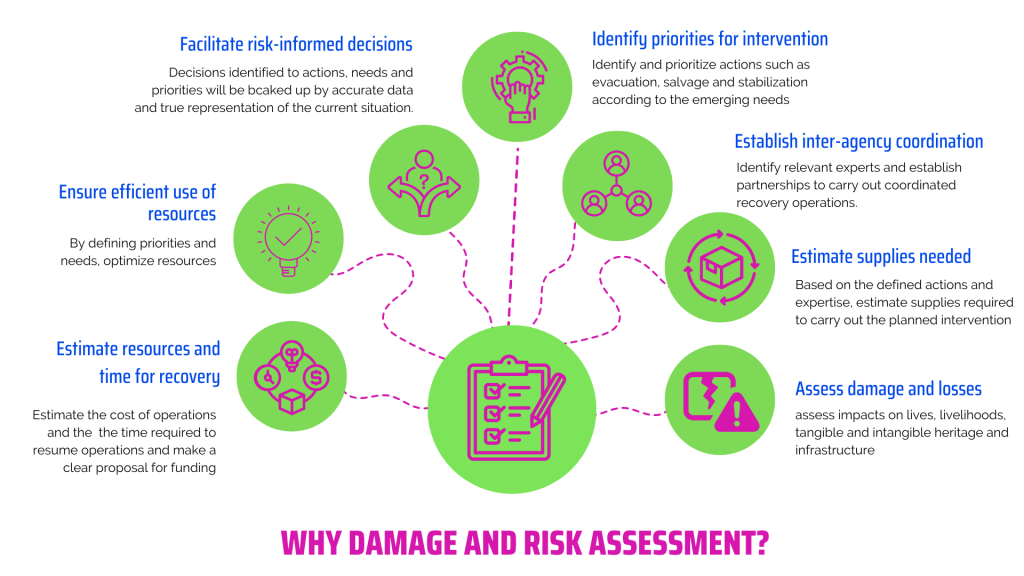
To seek technical advice and assistance, ICCROM Member States can write to the FAR Programme at: far_programme@iccrom.org

